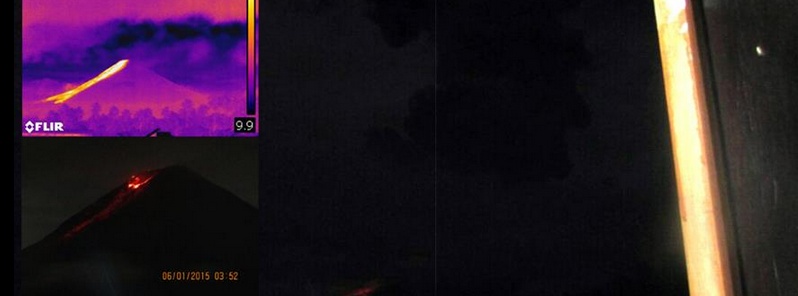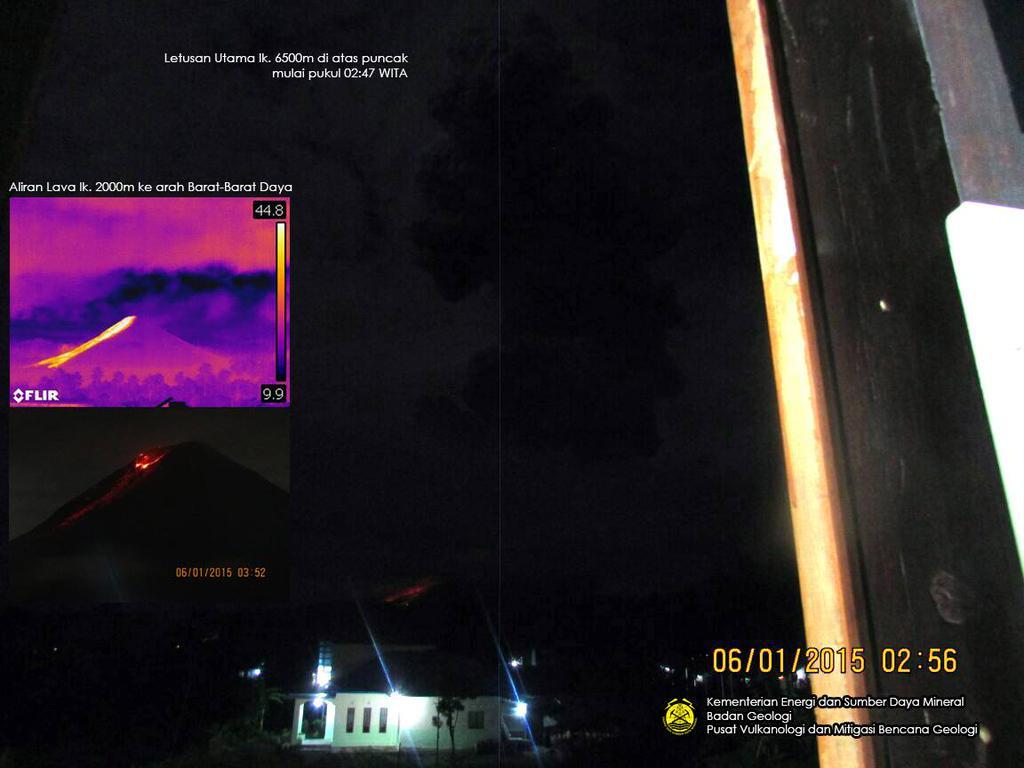Strong eruption of Soputan volcano, Indonesia

Indonesian Soputan volcano erupted at 02:47 local time on January 6, 2015 (18:47 UTC on January 5), according to BNPB.
A thick gray-black column of ash reached an estimated height of 6.5 km above the summit of the volcano and drifted ESE (approximately 8.2 km a.s.l.). Lava flow was observed traveling approximately 2 km WSW from the summit, Sutopo Purwo Nugroho, Head of Data Information and Public Relations for BNPB, said.
Alert level remains at second highest (3 out of 4), accompanied by a prohibited zone of 6.5 km around the summit. There was no reported damage to people and infrastructure and society remains active as usual.
Meanwhile, the status of Mount Slamet in Central Java has been lowered to Alert (level 2) from Standby (level 3) on January 5, 2015 due to a decline in volcanic activity and seismicity.
Activity of Mount Sinabung is still high and further eruptions are possible. Community is asked to remain in compliance with the recommendations of PVMBG, Sutopo said.

Eruption of Soputan volcano on January 6, 2015. Image credit: PVMBG
Soputan was mostly quiet during 2013 and 2014.
Its last eruptive episode started on August 8, 2012 and ended on September 19, 2012 (VEI 3). An eruption at 11:36 UTC on August 26, 2012 ejected incandescent tephra 50 m above the crater and produced a plume that rose 1 km and drifted W.
Based on information from PVMBG, NOAA, and analysis of satellite imagery, the Darwin VAAC reported that on August 27, 2012 an ash plume rose to an altitude of 12.1 km (40 000 ft) a.s.l. and drifted 150 km W. The eruption lasted four hours.
On August 28 an ash plume drifted 220 km SW at an altitude of 6.1 km (20 000 ft) a.s.l. On September 19, 2012 an ash plume from Soputan rose to an altitude of 9.1 km (30,000 ft) a.s.l.
Seismicity at the volcano decreased during November 1 – 26, 2012 and then significantly increased again on April 19, 2013 and on May 1, 2014.
Geologic summary
The small Soputan stratovolcano on the southern rim of the Quaternary Tondano caldera on the northern arm of Sulawesi Island is one of Sulawesi's most active volcanoes. The youthful, largely unvegetated volcano rises to 1784 m and is located SW of Sempu volcano.
It was constructed at the southern end of a SSW-NNE trending line of vents. During historical time the locus of eruptions has included both the summit crater and Aeseput, a prominent NE-flank vent that formed in 1906 and was the source of intermittent major lava flows until 1924. (GVP)
Featured image credit: PVMBG

Commenting rules and guidelines
We value the thoughts and opinions of our readers and welcome healthy discussions on our website. In order to maintain a respectful and positive community, we ask that all commenters follow these rules.